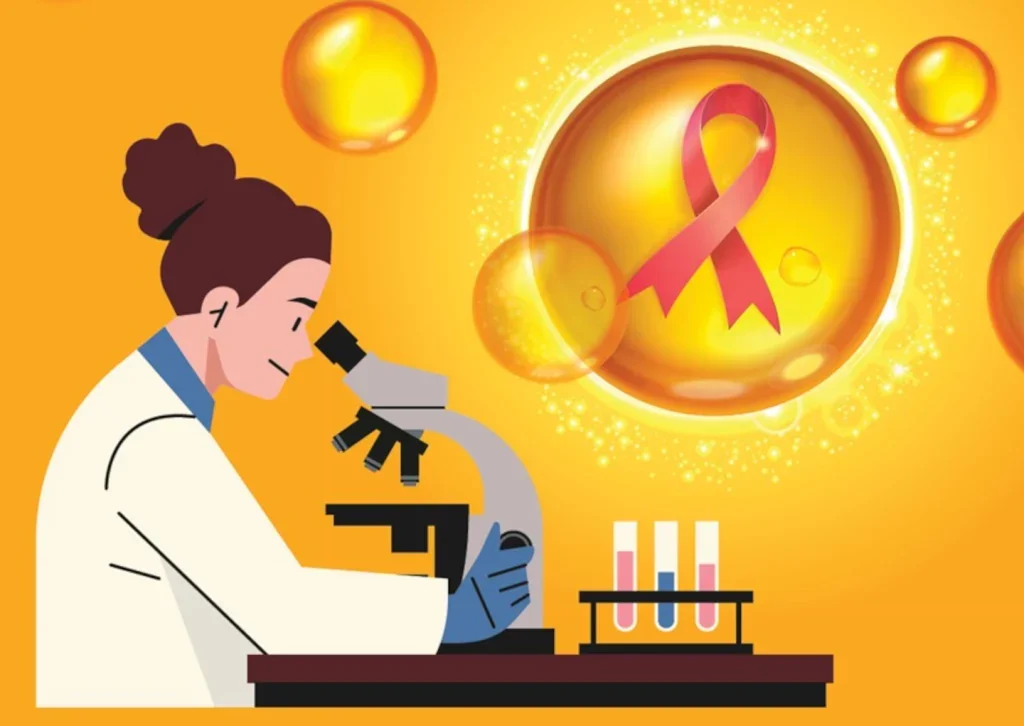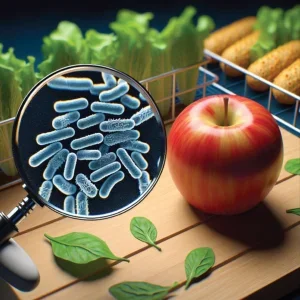
The health benefits of omega-3 are well established. A high intake has been associated with better eye, heart, brain and skin health, as well as a lower risk of many diseases. And although the picture is a little more complicated for omega-6, this essential fatty acid has an important role to play in the body’s growth and repair processes. It may have cardiovascular benefits too.
What’s less clear is whether omega fatty acids might also contribute to cancer prevention. To date, the evidence has been mixed – although some studies have found that omega-3s may play a therapeutic role against certain cancer types, others have found no convincing association. Some studies have even reported the opposite effect for omega-6, linking a high intake to higher rates of cancer diagnosis and progression.
Now researchers from the University of Georgia have waded into the debate with an important new study. Their research, published in the International Journal of Cancer in October 2024, used data from more than a quarter of a million people to explore the links between omega fatty acids and 19 different types of cancer. They found that both omega-3 and omega-6 were linked with a lower cancer risk overall.
“If you compare individuals that have high omega-3 levels versus those who have low omega-3 levels, there’s about a 10–15% reduction in the risk of developing any type of cancer,” says Dr Kaixiong ‘Calvin’ Ye, associate professor in UGA’s Franklin College of Arts and Sciences and corresponding author of the study. “The number is similar for omega-6. If you look at specific sub-types of cancer, the risk reduction is similar, between 5% and 15%.”

His team used data from the UK Biobank study, a huge prospective study that has tracked about half a million participants since 2006. Some of the participants had plasma samples taken at the start of the study period, meaning it was possible to measure how much omega-3 and omega-6 was circulating in their blood. These participants were tracked for an average of 12.9 years. During that time, 29,838 of the 253,138 eligible participants developed cancer.
As Ye explains, using this data pool had two main advantages. Firstly, the sample size is extremely large, conferring a good amount of confidence in the results. Secondly, blood levels of omega fatty acids are a good proxy for that person’s actual intake.
“A lot of the existing studies have a small sample size, and they look at dietary intake,” he points out. “Usually, you ask people what they eat using a questionnaire, and then we infer how much omega-3 that contains, which is far less accurate.”
Bringing down cancer rates
When they looked at specific cancer types, the researchers found that participants with higher levels of omega-3s were at lower risk of lung cancer, as well as cancers of the colon, stomach and other parts of the digestive tract. People with higher levels of omega-6 had lower rates of 14 different cancers, including brain, thyroid, bladder and malignant melanoma.
Only one cancer type bucked the overall trend. Perhaps surprisingly, the men with higher omega-3 levels had a 3% higher risk of prostate cancer. Ye thinks the jury’s out on whether this finding holds weight. “At the moment, [what] we don’t actually know is if omega-3 is good or bad in terms of prostate cancer? It’s something that needs more research,” he says.
Taken together, the studies in this field are far from conclusive. Some researchers think omega-3 could in fact be protective. For instance, a recent clinical trial led by UCLA Health recruited men with early-stage prostate cancer and supported them to eat a diet low in omega-6 and high in omega-3, coupled with fish oil supplements. The diet significantly slowed the growth rate of prostate cancer cells.
Another surprising finding from Ye’s research was the outsize role played by omega-6 in reducing cancer risk. It appears that omega-6 may be more protective against cancer than omega-3, which is not a finding borne out by the existing literature.
“Fourteen out of the 19 cancer subtypes have an inverse association with omega-6, compared to just five for omega-3,” says Ye. “There’s a general idea that omega-6 is something bad compared to omega-3, but actually we saw a more significant association here.”

Looking to probe these findings further, the researchers conducted a follow-up analysis that examined a slightly different metric. In their original study, they looked at omega-3 or omega-6 levels as a percentage of the total fatty acid levels circulating in the blood. In their new research, they used the absolute concentration of omega-3 or omega-6.
With this new methodology, many of the associations Ye and his team were tracking grew stronger still. Nearly all the cancer subtypes now showed an inverse association with omega-3 or omega-6 levels (for example, high consumption of these fatty acids meant a lower cancer risk). Omega-6 was still more protective on the whole, but omega-3 was very beneficial too and the red flag around prostate cancer disappeared.
“The relative amount of omega-3 is associated with a higher risk of developing prostate cancer, but when we do the analysis with the absolute concentration, the association goes away,” notes Ye.
The team also wanted to find out whether the ratio of omega-3 to omega-6 was relevant to cancer risk. As a wealth of previous research has found, the balance between the two seems to play a major role in disease development. Consuming too much omega-6 relative to omega-3 is thought to contribute to excess inflammation in the body. This is implicated in chronic diseases ranging from arthritis to Alzheimer’s disease.
In our ancestral diets, we tended to consume roughly equal quantities of the two fatty acids (a 1:1 ratio); whereas in modern Western diets the ratio is more like 16:1 in favour of omega-6. That’s because omega-6 is abundant in many seed and vegetable oils, as well as in the ultra-processed foods that contain them.
In an earlier study, published in April 2024, Ye’s team analysed the UK Biobank data to find participants’ omega-6 to omega-3 ratio. Next, they looked at how many people had died during the followup period and from what cause. In keeping with the existing research, people with the highest ratios had 26% higher total mortality, including a 31% higher incidence of cardiovascular deaths and a 14% higher incidence of cancer deaths.
That may well suggest people need to up their omega-3 levels. But in Ye’s view, it doesn’t mean that omega-6 is inherently bad. “The thing is, when you take those two components apart and look at omega-6 and omega-3 by themselves, both of them are inversely associated with mortality and cancer risk,” he says. “At the moment, I do not feel that there is a particular need to look at that ratio. I think looking at those two by themselves may be informative enough.”
Learning a thing or two
So, what should consumers take from the researchers’ findings? As Ye explains, few of us are deficient in omega-6, but many of us lack omega-3 in our diets. It might, therefore, be wise to consider omega-3 supplementation, as well as incorporating foods high in the fatty acid such as oily fish, flaxseeds and walnuts. In his view, there’s no compelling need to cut down on omega-6. That said, the right kind of intake may vary from one person to the next. In Ye’s own lab, he is looking into the genetics of omega-3 and omega-6 metabolism, to see whether specific populations of people might benefit more from supplementation than others. “We have found over 100 genetic positions that can contribute to omega-3 level in the blood,” he explains. “Those genes can impact how the fatty acid is metabolised and utilised. It would be interesting to provide fish oil supplements to people with different genetic backgrounds and find out whether they have the same effect.”
This would be a helpful addition to the research, as one limitation of the UK Biobank data is a potential lack of genetic diversity. While the participants do represent a good cross section of the UK population, the sample skewed heavily towards European ancestry and white ethnicity. That means the results might not be as applicable to people from different ethnic backgrounds.
Ye would also like to find out more about the different population subgroups within his sample. For instance, omega-3 tended to have a stronger effect in older male smokers, while omega-6 was stronger in younger female non-smokers. It isn’t clear why that might be. “There are a lot of research directions you can go in,” remarks Ye.
It also isn’t clear why omega-3 and omega-6 might help protect against cancer. Ye’s team have not looked into what the mechanism might be, and he doesn’t feel comfortable speculating. That said, we know that omega-3s have anti-inflammatory effects, and that foods rich in omega-3 and omega-6 fatty acids tend to contain many other trace nutrients that are beneficial to health.
Obtaining a good balance of these foods is clearly important for optimal functioning. And though there are many questions remaining, this latest study provides compelling evidence that they may also be linked to cancer prevention.
Astaxanthin: antioxidants sourced from the sea
Astaxanthin is a naturally occurring dark red carotenoid primarily found in aquatic animals, including salmon, trout, krill, shrimp, crayfish, crustaceans and microalgae. It stands out as one of the most potent lipophilic antioxidants, exhibiting a remarkable antioxidant strength that surpasses vitamin E by a factor of 500. In comparison with other carotenoids like lutein, lycopene and betacarotene, astaxanthin proves to be even more robust.
Extensive research has demonstrated the numerous benefits of natural astaxanthin. Its consumption has been linked to a reduced risk of certain chronic diseases, enhanced cardiovascular health, increased muscle strength, relief from joint pain, anti-inflammatory properties, immune system stimulation and the promotion of healthy skin.






